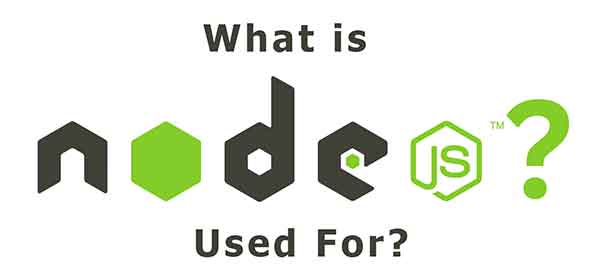
What is the purpose of Node.js?
Node.js is a JavaScript runtime based on the V8 JavaScript engine in Chrome. It enables developers to run JavaScript on the server side, allowing them to create high-performance, scalable online apps. In this essay, we will explore what is Node js used for and present numerous instances of how it may be utilized.
Applications for the Web
Building web apps is one of the most prevalent uses of Node.js. Node.js offers a lightweight and efficient runtime environment that enables developers to create web apps with a tiny footprint and high performance. It also includes a web server, making it simple to handle HTTP requests and answers.
The popular JavaScript framework, Express.js, is an example of a web application created with Node.js. Express.js is a Node.js web framework that offers a simple and flexible approach to construct online apps. It includes routing, middleware, and other tools for developing web applications.
Applications that run in real time
Another prominent use of Node.js is the development of real-time applications such as chat apps and online gaming. Node.js is well-suited for developing real-time applications because it has a non-blocking, event-driven design that enables for the quick and efficient handling of numerous concurrent connections.
Socket.io is an example of a real-time application created with Node.js. Socket.io is a JavaScript package that allows web clients and servers to communicate in real time. It enables developers to create real-time applications such as chat apps and online games with ease.
Applications for the Command Line
Node.js may also be used to create command-line interfaces. It has a large number of built-in modules for interacting with the file system, reading and writing to the console, and doing other basic command line activities.
Yeoman is an example of a Node.js command line application. Yeoman is a web application scaffolding tool that helps developers to quickly build boilerplate code for their projects. It offers a command line interface for creating many forms of code, including HTML, CSS, and JavaScript.
Q&A
Q: What is the purpose of Node.js?
A: Node.js is a programming language that is used to create online apps, real-time applications, and command line applications. It includes a lightweight and efficient JavaScript runtime environment as well as a built-in web server for processing HTTP requests and answers.
Q: What are some instances of Node.js-powered web applications?
A: Express.js is an example of a Node.js-based web application framework. It enables the creation of web applications with routing, middleware, and other capabilities in a simple and flexible manner.
Q: What are some examples of real-time Node.js applications?
A: Socket.io is an example of a JavaScript library that allows web clients and servers to communicate in real time. It enables developers to create real-time applications such as chat apps and online games with ease.
Exercises
- Research and find an example of a web application built with Node.js that is not mentioned in this article.
- Research and find an example of a real-time application built with Node.js that is not mentioned in this article.
- Research and find an example of a command line application built with Node.js that is not mentioned in this article.
Answers
- An example of a web application built with Node.js that is not mentioned in this article is the Node.js version of the Ghost blogging platform. Ghost is a powerful open-source blogging platform.
- An example of a real-time application built with Node.js that is not mentioned in this article is Meteor. Meteor is a full-stack JavaScript framework that allows for the development of real-time web and mobile applications. It uses Node.js on the server side and provides a reactive programming model for real-time updates.
- An example of a command line application built with Node.js that is not mentioned in this article is Grunt. Grunt is a JavaScript task runner that allows developers to automate repetitive tasks such as minification, compilation, and testing. It uses a command-line interface and can be easily integrated with other tools and libraries.